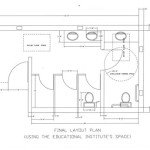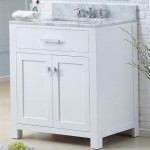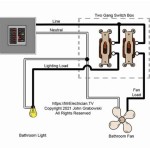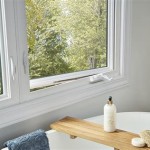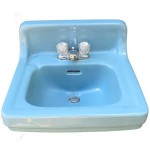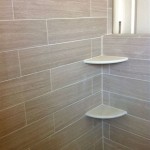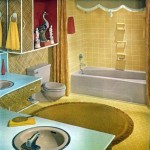How to Make a Bathroom Vanity Fit
Bathroom vanities are central to both the functionality and aesthetics of a bathroom. Ensuring a proper fit is crucial for visual appeal and preventing future issues like water damage and instability. This guide outlines the essential steps for achieving a perfect vanity installation.
Preparation is Key
Before purchasing a vanity, accurate measurements of the bathroom space are essential. Measure the width, depth, and height of the intended location. Consider door clearances, existing plumbing locations, and any potential obstructions like windows or radiators. These measurements will guide the selection of a suitably sized vanity.
Once the vanity is chosen, gather the necessary tools. These typically include a measuring tape, level, stud finder, drill, screwdriver, wrench, plumbing fittings, caulk gun, and safety glasses.
Plumbing Considerations
Turning off the water supply is the first step in preparing for plumbing work. Locate the shutoff valves for both hot and cold water lines supplying the bathroom. Turn these valves clockwise to shut off the water. After turning off the valves, open the faucet to release any remaining water pressure in the lines.
Next, disconnect the existing plumbing. Place a bucket under the P-trap to collect any remaining water. Use a wrench to disconnect the supply lines and the P-trap. Once disconnected, thoroughly clean the area around the plumbing connections.
Positioning the Vanity
Carefully position the vanity in the desired location, ensuring it is centered and level. Use shims under the base to compensate for any unevenness in the floor and achieve a perfectly level surface. Once the vanity is level, mark the wall through the pre-drilled mounting holes in the back of the vanity. These markings indicate where to drill pilot holes for the mounting screws.
Securing the Vanity
Using a drill and the appropriate drill bit, create pilot holes at the marked locations. It's important to use a drill bit slightly smaller than the diameter of the mounting screws. This prevents the wood from splitting and ensures a secure hold. Attach the vanity to the wall using the provided mounting screws, ensuring it remains level throughout the process.
Connecting the Plumbing
With the vanity securely in place, connect the water supply lines to the faucet tailpieces. Use a wrench to tighten the connections, ensuring they are snug but not over-tightened. Connect the P-trap to the drain pipe and tighten the connections according to the manufacturer's instructions.
Final Touches and Testing
Apply a bead of caulk around the base of the vanity where it meets the floor. This creates a watertight seal and prevents moisture damage. Smooth the caulk with a wet finger for a clean finish.
Once the caulk is dry, turn the water supply back on slowly. Check for leaks at all connections, including the supply lines, faucet, and drain. If any leaks are detected, tighten the connections or replace any faulty parts. Run the faucet for several minutes to ensure proper drainage and water flow.
Installing the Countertop and Sink (If Applicable)
Some vanities require separate installation of the countertop and sink. Follow the manufacturer's instructions for securing the countertop to the vanity. If the sink is a drop-in style, apply a bead of silicone sealant around the edge of the sink cutout before placing the sink in position. For undermount sinks, follow the manufacturer’s instructions for attaching the sink to the underside of the countertop.
Finishing the Installation
Install the faucet and drain assembly according to the manufacturer's instructions. Connect the water supply lines and check for leaks. Apply caulk around the edges of the sink where it meets the countertop to create a watertight seal.
Considerations for Different Vanity Types
Different types of vanities, such as floating vanities and corner vanities, may require specific installation procedures. Always consult the manufacturer's instructions for detailed guidance on the specific model being installed. Floating vanities, for example, require careful attention to wall mounting and weight distribution. Corner vanities may involve angled cuts and specialized fittings for plumbing connections.
Maintenance and Care
Regular cleaning and maintenance will prolong the life of the vanity. Wipe down the surfaces with a damp cloth and mild cleaner. Avoid abrasive cleaners that can scratch the finish. Inspect the plumbing connections periodically for leaks and tighten or replace any faulty parts as needed.

How To Install Bathroom Vanity Units That Make Your Friends Jealous

Tutorial How To Install A Bathroom Vanity The Diy Playbook

How To Install A Vanity Forbes Home

How Much Do Bathroom Fitters Earn In The Checkatrade

Bathroom Vanity Styles To Fit Your Space Forbes Home

How Much Do Bathroom Fitters Earn In The Checkatrade

Beautiful Bathroom Vanity Ideas Forbes Home

Diy How To Remove And Install A Bathroom Vanity

Beautiful Bathroom Vanity Ideas Forbes Home

New Bathroom Vanity Counter Not Square Wall Ideas
Related Posts
